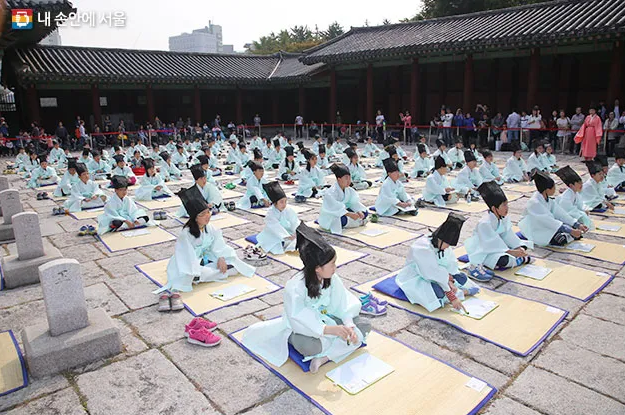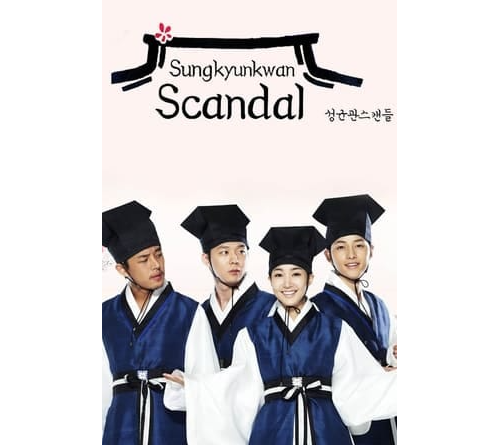Why History Matters: Understanding a Nation Through Its Past
We often think of history as merely dates and names, but it’s far more critical than that. History shapes a nation’s soul. By understanding a country’s past, we can:
- Understand its present: Identify the origins of cultural norms, political systems, and even collective anxieties.
- Move beyond stereotypes: Gain nuanced perspectives on why people behave as they do.
- Recognize the “cultural DNA”: Uncover underlying values and beliefs that persist through generations.
For South Korea, the intense pressure to succeed in education—often called “education fever”—isn’t a new trend. It has deep roots in the Joseon Dynasty (1392-1910) and its infamous Gwageo civil service examination system (과거시험).
In my previous article, I introduced Joseon as a nation governed by scholar-officials, known as sadaebu (사대부). But how did one actually become a sadaebu?
The answer was simple yet extremely challenging: Pass the gwageo exam.

Education as a Path to Social Mobility
Joseon society was hierarchical but had a unique feature:
- Not Just Bloodlines: Unlike many European systems where nobility was purely inherited, high-ranking official positions in Joseon were (at least theoretically) attainable through merit via the Gwageo.
- The Dream of Advancement: Although wealthy families held significant advantages (tutors, resources, study time), any freeborn man (yangin, 양인) could technically take the exam. This created a powerful dream: a poor but brilliant scholar could elevate his entire family through academic success, fueling nationwide obsession.
The Gwageo: Korea’s Original High-Stakes Test
The Gwageo wasn’t just an exam; it defined the lives of many Joseon men, especially the yangban (양반, ruling class). Even yangban had to earn and maintain their privilege by passing the Gwageo. But the Gwageo was notoriously difficult, and here are some key reasons why:
- Unimaginable Difficulty: Modern “exam hell” pales in comparison. Preparation began with foundational texts like Sohak (소학), Daehak (대학), and Zizhi Tongjian (자치통감) (which has 294 chapters; even its summarized version exceeded 50 chapters). Candidates were expected to read thousands of books, each thousands of times. It is well known that the scholar Kim Deuk-sin read the Sagi 130,000 times.
- Lifelong Commitment: Preparation typically began around age five and often lasted decades. The average successful candidate was in his mid-thirties, though many persisted much longer. Park Mun-gyu, for instance, passed the exam at age 83 after starting his studies at 40.
- Incredibly Low Pass Rate: The official Gwageo exams were held once every three years, selecting only 33 successful candidates. In addition to these regular triennial exams, there were also special examinations held irregularly on significant occasions, such as royal celebrations or important state events. Despite the existence of these additional opportunities, competition remained fierce due to the sheer number of yangban dedicating their lives to exam preparation. Consequently, a massive pool of highly educated yet unemployed individuals emerged, profoundly affecting Joseon society.
The Gwageo Exam: Stages of Hell
The Gwageo was a multi-stage ordeal designed to filter out all but the most exceptional candidates:
- Preliminary Exams (Sogwa, 소과):
- Qualifying exams granting entry to Seonggyungwan (성균관), akin to an Ivy League school.
- First round selected 700 passers; second round narrowed down to 200.

- Main Exam (Daegwa, 대과):
- Held every three years; narrowed thousands down to just 33 candidates through two rounds—chosi (초시) and boksi (복시).
- Ranking Exam (Jeonsi, 전시):
- Final ranking among the successful 33 candidates; top scorer earned title “Jangwon (장원).”
Early Cram Schools
Joseon had a range of educational institutions that served, to varying degrees, as preparation for the gwageo. These included seodang (서당) for elementary education, hyanggyo (향교) as local state-sponsored schools, and seowon (서원), private academies that often focused on advanced Confucian studies and, increasingly, preparation for the higher levels of the gwageo.

The Dark Side of Gwageo
The intense pressure and high stakes led to numerous problems:
- Inequality: Wealthier families could afford the best tutors (seungsa, 숙사) and resources, creating a system where wealth, not just merit, determined success.
- Widespread Cheating: Cheating was rampant, ranging from smuggled notes to bribery and impersonation. There was even a famous case of a 40-meter underground tunnel used to pass cheat sheets!
- Factionalism: Political factions (bungdang, 붕당) used the gwageo as a battleground, trying to rig the exams to favor their candidates.
- The “Exam-Taking Machine”: Emphasis on rote learning produced candidates who excelled in standardized tests but lacked practical skills or critical thinking—known as Ipsihyeong Ingan (입시형 인간). This cultural preference for exam excellence might even be responsible for many contemporary societal issues in Korea.
The Legacy of the Gwageo: A Double-Edged Sword
Despite its flaws, the Gwageo system profoundly shaped Korean society:
- Cultural Emphasis on Education: Established education as the primary path for personal and familial advancement.
- Meritocratic Ideal: Reinforced the belief that success should depend on ability and effort, although social inequalities frequently undermined this ideal.
- Persistent Competition: Created a highly competitive environment still influencing Korea’s modern educational culture.
Historian Han Young-Woo argues in his book Gwageo: Ladder to Success (과거, 출세의 사다리):
Most of the Joseon-era figures widely known to Koreans, both famous and infamous, rose to prominence through these exams, highlighting Gwageo’s central role in Korea’s history and culture.
As Hong Dae-Sun points out in The Birth of Koreans (한국인의 탄생), modern Korean exams remain extensions of this historical system. Though Gwageo itself has vanished, its spirit persists through the intense academic pressures of contemporary South Korea.
Coming Up Next:
In the next article, I’ll explore how even royal princes in Joseon couldn’t escape this brutal education system. If you thought royalty was exempt from “study hell,” think again. Stay tuned!
This article references the following books:
- 과거, 출세의 사다리 4권 (Gwageo: Ladder to Success V4, 2014) – 한영우 (Han Young-Woo)
- 조선, 시험 지옥에 빠지다 (Joseon: Trapped in Exam Hell, 2024) – 이한 (Lee Han)
- 한국인의 탄생 (The Birth of Koreans, 2024) – 홍대선 (Hong Dae-seon)
- 문무를 갖춘 양반의 나라 (Joseon, the Country of Scholar-Warriors, 2015) – 김강식 (Kim Gang-Sik)
- 조선시대 양반과 선비 1: 삶 그리고 이상 (Yangban and Seonbi of Joseon Dynasty Vol. 1: Life and Ideals, 2024) – 정진영 (Jung Jin-Young)
- 대한민국 부동산 부의 역사 (The History of Real Estate Wealth in Korea, 2022) – 이상우 (Lee Sang-Woo), 유성운 (Yoo Seong-Woon)
